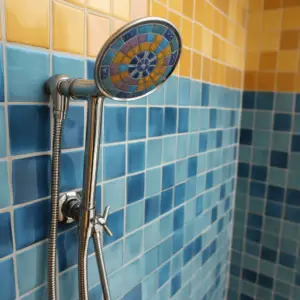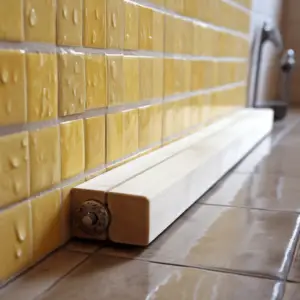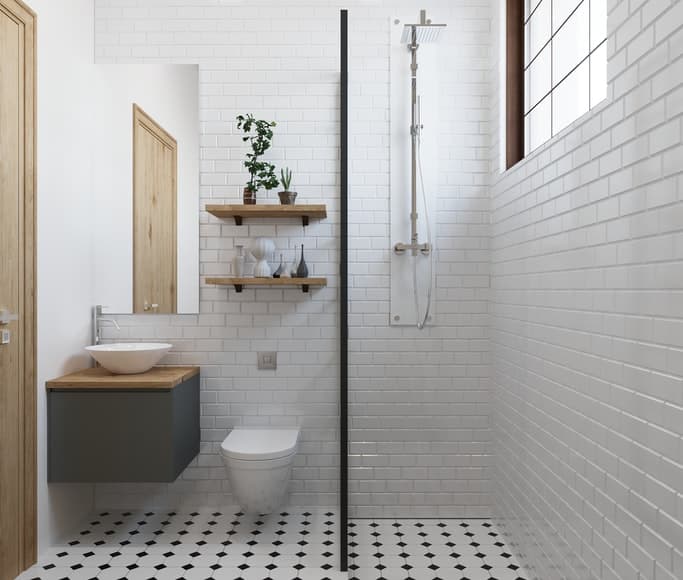Shower Grout, Looking up to grouting a bathroom shower? Well, it’s a great idea because, without the grouting process, the artistic tiles in your bathroom wouldn’t be complete.
Whether you’re doing a renovation, new construction, or some overdue shower maintenance, grout comes in handy to fill the gaps in tiling to forestall dirt, food, and pinkie toes from getting stuck in between.
However, for grout to work its magic it should be left to dry for a recommended length of time before using the shower; otherwise, all your efforts will be ruined. While grout cure time differs, you might be wondering how long you should leave it to dry before using the shower.
Table of Contents
How Long Does Grout Take To Dry Before Using Shower? Grout Cure Times

On average, grout takes between 24 and 72 hours to fully cure. However, the exact time varies depending on the type of grout, humidity levels, and whether you’re working outdoors or indoors. Most manufacturers suggest waiting three to seven days before exposing grout to moisture.
Even when your shower grout looks dry, using it or sealing it before it’s ready may lead to premature failure and damages which will outline below. In any case, consult the manufacturer’s specifications and carefully follow the instructions.
Actual Drying Times of Five Popular Grouts
The best way to determine how long it will take grout to cure is to read the instructions on the packaging. In all instances, it’s an absolute minimum of 24 hours, but we recommend always exceeding the manufacturer’s instructions.
If you’re considering sealing the grout, which is common for most cases, you should leave the grout to dry even longer so that all moisture is released before you expose it to moisture again. Cement-based grouts take between 24 and 72 hours before you apply a sealer.
Epoxy grouts, meanwhile, don’t always require to be sealed; thus the waiting time will be somewhat shorter with ease.
Factors that Affect Drying Time of Grout
While you should always follow the manufacturer’s recommendations, several factors can impact the average drying time grout. The most common factors include the type of grout, humidity levels, and whether you’re working outdoors or indoors.
Type of Grout
Subject to the type of grout you use, the recommended drying time can vary. Here’s a look at a few common types of grout:
Cementitious Grout
The average drying time for cement-based grout is 72 hours. Cementitious grouts are easier to apply than epoxy grouts but they take longer to apply. It is a sand-like texture that is mixed with water and common material, typically used for residential projects.
On average, it can take up to three days to dry, which can be 48 hours longer than epoxy-based grout. It is, however, less expensive and easier to install compared to epoxy. There are also sanded and unsanded varieties of cement grout that have slightly different drying times.
Epoxy Grout
Epoxy grout takes an average of 24 hours to fully dry. It is more challenging to install compared to cement-based grout, as it contains epoxy resin and hardener, making it ideal for tiles that will be exposed to harsher materials such as acid and grease.
Epoxy grout is more durable and resistant to stains, cracks, chemicals, and weather changes. Since this grout doesn’t always require to be sealed, it’s cured and ready to go much sooner than concrete grout. Epoxy grout is mostly used for commercial projects or industrial applications.
Furan Grout
Much like epoxy grout, furan grout takes 24 hours to dry on average. Although it’s quite similar to epoxy, furan grout is made of polymers of fortified alcohol. As it dries, it creates a thermosetting resin to withstand high temperatures and strong chemicals.
This type of grout is typically used for brick pavers and quarry tile. It’s also common in industrial settings like breweries, labs, commercial kitchens, and meatpacking plants.
Humidity Levels
The concentration of water vapor in the air also affects the drying time of grout. For instance, a bathroom is usually the most humid room in the house, meaning the grout will take longer to dry there compared to the kitchen.
The actual drying time can also be affected by outdoor humidity. Grout often takes shorter to dry in desert climates like Las Vegas than in tropical climates like Florida.
Indoor plants can also impact how long grout takes to cure. Plants like lily and philodendron release moisture adding to the humidity levels inside a home.
Indoor vs. Outdoor
It takes grout longer to dry fully outdoors than indoors. This is especially the case if it’s wet, snowy, rainy, humid, or cold outside. It takes a minimum of seven days to dry outside even in good weather.
If you’re expecting harsh weather conditions, make sure the area is covered by tenting while allowing at least a foot of space for airflow. Also, before commencing a grouting project, check that the temperature will be at least 50 degrees Fahrenheit for the next seven days. For indoor projects, most types of grouts require an average of 72 hours for the grout to dry fully.
What Happens if Grout Doesn’t Dry Properly

Some of the major issues associated with Uncured Grout include:
Weak Joints: If it is not allowed to dry properly, the grout won’t provide a strong joint between the tiles. This can result in holes, cracks, or gaps in the grout line, which can weaken the joints and allow moisture to sneak in under the tiles.
Crack and Crumble: Using the shower before the grout is fully dried increases the chances of the grout cracking and crumbling.
Peels and Flakes: This is often caused by applying the seal before the grout has fully dried. The grout can peel and flake, and shrink its overall strength and appearance.
Discoloration: This is usually the case when you use white or light-colored grout. Discoloration occurs when you use the shower before the grout is fully cured.
Mold and Mildew: If the grout is not allowed to dry properly, it may end up developing mold and mildew. The cracks, flakes, crumbles, and weak joints all allow moisture to penetrate the grout, which leads to mold and mildew.


